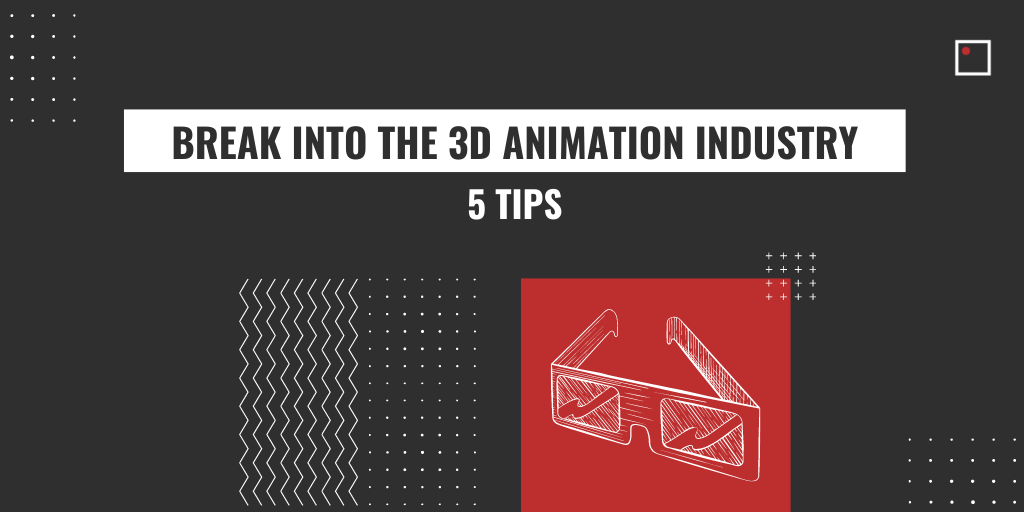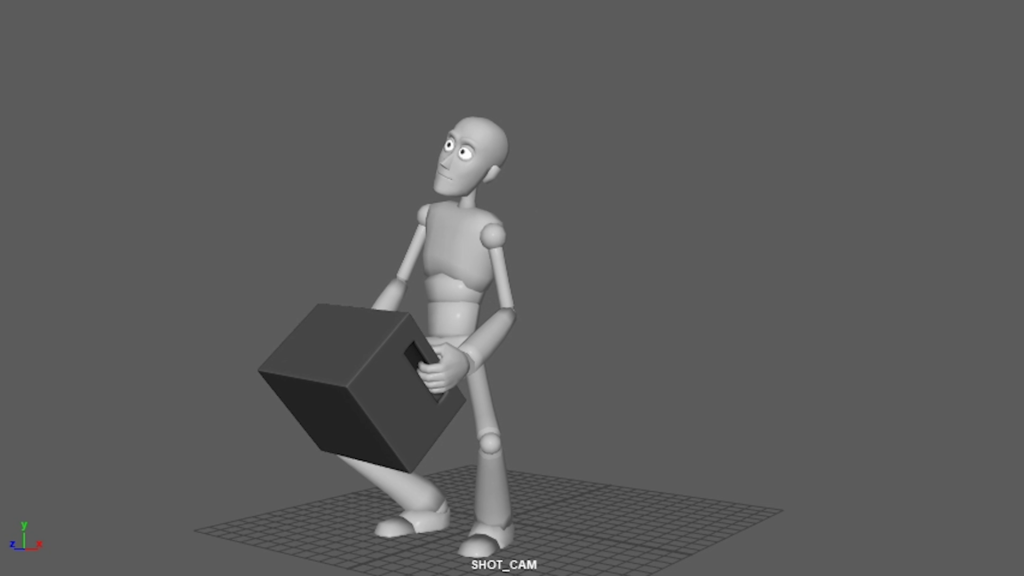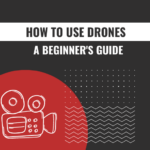5 Tips to Break into the 3D Animation Industry
THE 3D ANIMATION INDUSTRY IS AT AN ALL-TIME HIGH. MORE CONTENT, MORE JOBS, MORE OPPORTUNITIES. ANIMATE YOUR FUTURE BY READING THIS LIST.

Written by Rachel Kim
From bio-diverse animals to alien robots to resurrections of people long past, 3D animators have brought to life our wildest imaginations of this world and beyond.
Since Pixar’s breakthrough with Toy Story in 1995, 3D animation has quickly dominated our media. Just a cursory glance at the latest Hollywood blockbusters shows how much we depend on 3D animators to breathe life into these imagined worlds. As the industry’s growth skyrockets, the demand for 3D animators has never been greater.
InFocus animation mentor Selman Kantarci has worked on several large-scale productions including Detective Pikachu, Sonic the Hedgehog, Maleficent 2, Cats and more. He draws from his well of industry experience working at companies like MPC, Bardel Entertainment, and (currently) Method Studios to offer practical advice and encouragement to anyone hoping to build a career in 3D animation.
01. UNDERSTAND MOTION

3D animators are primarily focused on motion: what it looks like and what it tells us about the world or the characters.
In the real world, everything moves according to the laws of physics. In the animated world, everything moves according to the animator’s decisions.
Unlike in traditional animation (where the animator draws the sequential movement of 2D figures), a professional 3D animator usually rigs and moves a figure provided by a 3D modeler, much like a puppeteer. But make no mistake—it’s not an easy job! 3D animators aren’t “just moving things around.”
“We need purpose to move characters,” says Selman, “In a sense, you need to be an actor.”
Imagine an actor picking up an empty box as if it were full of rocks. How would they move? Slowly, muscles tensed, face scrunched? Maybe they even tremble as if straining under the weight? Similarly, since animated objects have no weight, the animator must express the box’s heaviness through the character’s movements.

Most 3D animators will film themselves doing specific tasks so they can capture realistic motions.
Animating with purpose ensures every movement makes sense and is grounded in some reality. The audience can and will detect inconsistent movement and can be put off if, for instance, all the characters move like plastic dolls (unless it’s the Lego Movie!). Meanwhile, realistic animation can make even the most fantastical creatures and elements believably real.
02. SEAMLESS PRACTICE
No gimmicks or shortcuts here. The key to learning 3D animation is purposeful observation and repetition.
“The first thing is to find out how the body moves–the body mechanics,” says Selman, “I analyze people, I watch myself, I act. I figure out the motions and then I try to apply those motions to my characters.”

Much like good editing, good animation feels seamless. This requires building a keen understanding of realistic motion. Animators frequently use real world references, whether it’s studying a live animal or having actors perform a scene or even people-watching at a cafe.
After that it’s all about practice and repetition.
It’s best to start with what you’re most passionate about. For Selman, that was character animation. That passion kept him going as he worked on the same assignments again and again, often deleting and starting over until he was satisfied. By the end of all this practice, animations that used to take him an entire day took him only half an hour to complete.
Reflecting on that process, Selman says, “It made me confident and comfortable with my animation.”
03. STUDY THE CRAFT
There are so many online resources and tutorials these days that it seems like 3D animation can easily be self-taught. However, a big disadvantage of being self-taught is that it’s difficult to improve your eye alone; you need to know what to look for, to be able to gauge your level of proficiency.
“At first, we don’t really know where our skills are,” says Selman, “What happens is we make our own stuff and we just get excited and happy and automatically think it’s great. But we don’t actually see what it really looks like.”
A professional eye looking at your work and providing feedback can help you develop your own eye and your own skills.

School is also great place to access and build a network of professional connections. Many companies and recruiters come looking for talent to hire because they constantly need animators as the industry grows.
“I had so many friends that got a job while they were students because someone from the industry came and saw a little bit of their work,” says Selman. In fact, if impressed by a student, Selman says he would personally try to connect them with his lead animator or supervisor.
For Selman, school provided other unexpected opportunities. When his school asked him to be a teacher’s assistant, Selman took the position and used the opportunity to polish his work further.
04. PICK YOUR PATH, KNOW YOUR SPECIALTY
Selman’s advice? Pick your path and use it to guide your demo reel.
Knowing what the industry is looking for is crucial. Go to some of the industry’s many conferences (like the SPARK Animation Festival) and talk to recruiters. Ask what they’re looking for.
Because each project has different needs, recruiters will be very specific in what they want. They might ask if you’ve ever animated a spaceship or somebody throwing a rock. If they need to animate giraffes and you have animal work on your reel, they’ll want to see how good your content is.
 Even if a company doesn’t need you for the particular show they’re working on, they might call you for an upcoming project.
Even if a company doesn’t need you for the particular show they’re working on, they might call you for an upcoming project.
It’s also good to figure out where you want to work and what that company wants. You can then prepare something tailored for them to catch their attention.
That being said, Selman recommends mastering what you really love to do first rather than prioritizing what’s needed right now. You can jump around to other stuff after you’ve made it “your thing.”
05. STAY CONSISTENT IN FINDING WORK
The agonizing wait, the disappointing rejections. It’s easy to lose confidence while seeking work.
“If you don’t get picked, that doesn’t mean you’re bad,” stresses Selman, “It’s just not the right time or they’ve already found an animator offering exactly what they need.” After all, if a company needs animated plants, they’re going to hire the 3D animator who specializes in plants.
With the sheer mass of applicants, the hiring process takes a long time for any company. If you don’t hear back after two weeks, check in with the company to see what they’re looking for. A simple message is enough; for example: “I applied for the position and I’d really like to hear your feedback. If my resume or demo reel doesn’t meet company standards, I’ll then know which areas to improve on and reapply.”
Junior positions are the beginning of any 3D animator’s career. Don’t hesitate to take them! Your work experience is as important as your demo reel. Companies will always check where you previously worked, what shows you’ve worked on, how long you worked on a single project etc. They’ll try to get a feel for the kind of person you are through your work history.
Breaking into the industry and becoming a professional 3D animator might feel daunting but so many have already gone on to build fulfilling careers in this booming field. The demand is there for anyone passionate about 3D animation.
“To make it through the industry, the first step is to ‘do it’,” says Selman. All you need in the end is to do the work.
Related Links:
InFocus Film School 3D Animation Program
Bring Your 3D Character to Life in 5 Simple Steps
Why Is Acting Important In 3D Animation?
The History of 3D Animation: A Deep Dive
TALK TO A PROGRAM ADVISOR
By submitting this form you are agreeing to be contacted by InFocus Film School. We will never sell or distribute your information, and you may opt-out of receiving emails from us at any time. Read our Privacy Policy here.





